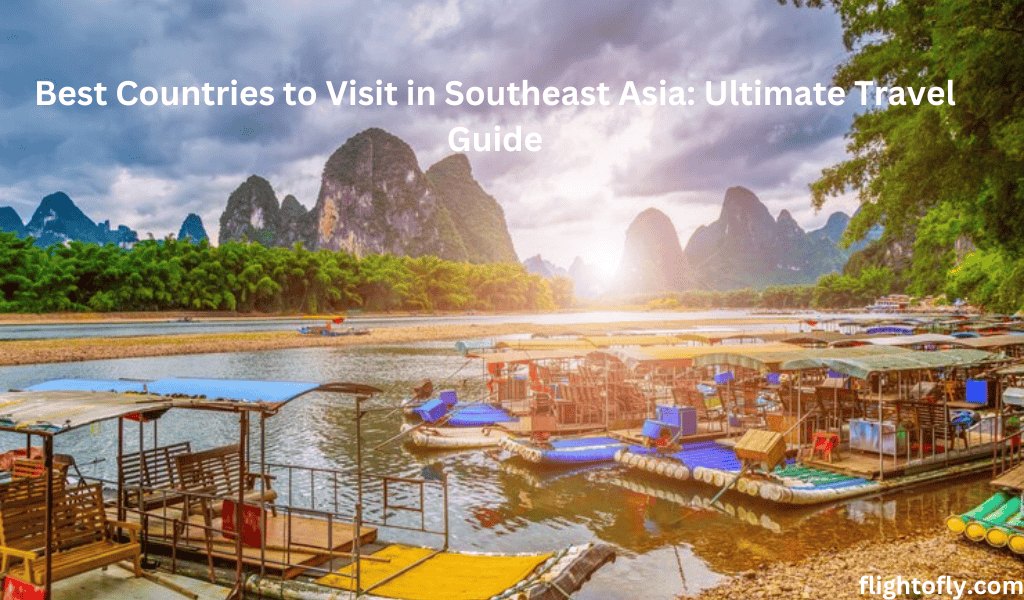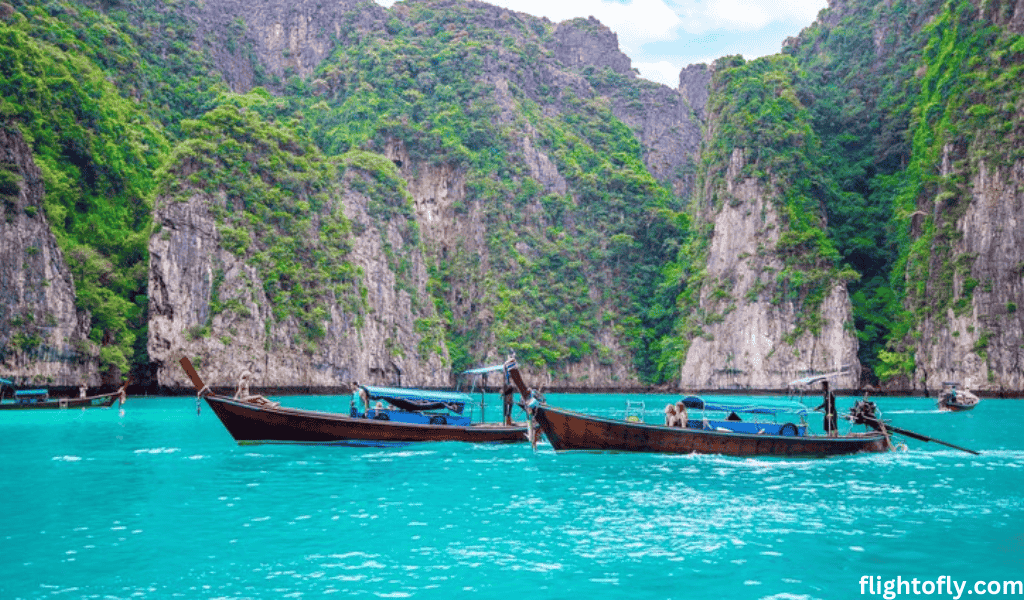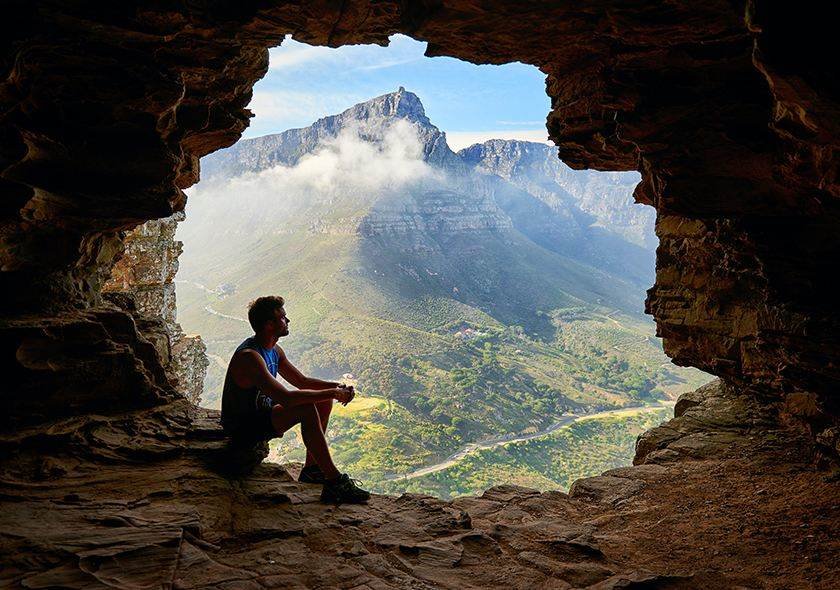
9 Best Countries to Visit in Southeast Asia: Ultimate Travel Guide
Southeast Asia is a captivating region filled with vibrant cultures, rich history, and diverse landscapes that attract travelers from all over the world. From the golden temples and lush jungles of Cambodia to the bustling streets of Bangkok and serene beaches of Indonesia, every destination offers something unique. Whether you’re looking for ancient heritage, breathtaking natural beauty, or modern city vibes, Southeast Asia Countries have it all. Each country in the region is a perfect blend of adventure, culture, and natural wonders, making it a must-visit for any traveler.
Beautiful Countries to Visit in Southeast Asia Countries
The best countries to visit in Southeast Asia are:
Thailand: The Land of Smiles
Thailand stands out as one of the best Southeast Asian countries for tourists. You can enjoy street food, explore glittering temples, and relax on pristine beaches without breaking the bank. Locals extend friendly greetings, and the country’s mix of urban and rural scenes caters to every kind of traveler.
- Thailand’s culture blends ancient Thai traditions, Theravada Buddhism, and influences from neighboring regions.
- Modern cities like Bangkok feature towering skyscrapers and bustling nightlife.
- Serene countryside areas offer lush rice fields and traditional villages with a timeless appeal.
Thailand at a Glance
| Why Famous | Best Time to Visit | Must-See Places |
| Street food, tropical beaches, temples | November to April | Bangkok, Chiang Mai, Phuket |
Top Attractions in Thailand
Bangkok’s Grand Palace and Wat Phra Kaew dazzle with gold and intricate designs. Chiang Mai boasts hundreds of temples, and its night markets reflect Thailand’s love for street snacks and handcrafted goods. Phuket and Krabi showcase turquoise waters, soft sand, and dramatic limestone cliffs that inspire a sense of wonder.
Food and Culture in Thailand
Thai cuisine bursts with bold flavors from chili, lemongrass, and fish sauce. Temples anchor local communities, and you often see monks collecting alms early in the morning. Festivals like Loy Krathong highlight the country’s reverence for water and natural blessings.
| Dish | Approx. Price (THB) | Key Ingredients |
|---|---|---|
| Pad Thai | 50–100 | Rice noodles, tofu, shrimp, peanuts, tamarind sauce, bean sprouts |
| Tom Yum Goong | 60–120 | Shrimp, lemongrass, galangal, kaffir lime leaves, chili, fish sauce |
| Green Curry | 70–120 | Green curry paste, coconut milk, chicken or tofu, Thai basil, vegetables |
| Mango Sticky Rice | 40–80 | Glutinous rice, coconut milk, ripe mango, sugar |
Travel Tips for Thailand
You can easily use trains and buses to navigate between cities, and local tuk-tuks provide an iconic way to explore urban areas. Dress modestly when entering temples, and always remove your shoes at the entrance. Negotiate gently with market vendors to experience a lively cultural exchange and score great deals.
| Travel Detail | Approx. Price (THB) | Description |
|---|---|---|
| Domestic Flights | 1,000–3,500 per flight | Low-cost airlines like Thai AirAsia, Nok Air, and Bangkok Airways offer affordable flights between major cities. |
| Trains (Bangkok to Chiang Mai) | 200–1,200 per ticket | A scenic and comfortable way to travel, with different classes available (economy, first class). |
| Bus Travel (Bangkok to Phuket) | 300–700 per ticket | An affordable option, with various classes like VIP and standard buses available. |
| Tuk-Tuk Ride (City) | 50–150 per short ride | A fun and iconic way to explore urban areas like Bangkok, though prices can vary based on distance and negotiation. |
| Guided Tours (Full Day) | 1,000–2,500 per person | Full-day city tours, temple visits, and nature excursions are offered by companies like GetYourGuide and Viator. |
| Airline (Bangkok to Phuket) | 1,000–2,500 per flight | Full-day city tours, temple visits, or nature excursions are offered by companies like GetYourGuide and Viator. |
Pakistan: A Crossroads of Culture and Heritage
Pakistan attracts travelers who want to see rugged mountains, centuries-old mosques, and the legacy of the Indus Valley Civilization. This South Asian gem brims with a diverse landscape that spans deserts, rivers, and some of the world’s tallest peaks. Its bustling bazaars, historical forts, and friendly locals ensure an immersive journey for adventurous souls.
- The northern areas boast dramatic scenery, including the Karakoram and Himalayan ranges.
- Mughal-era architecture in Lahore and the remnants of ancient cities like Taxila showcase Pakistan’s layered history.
- Vibrant festivals highlight cultural richness, and local traditions vary from region to region.
Pakistan at a Glance
| Why Famous | Best Time to Visit | Must-See Places |
|---|---|---|
| Himalayan peaks, Indus Valley civilization, Mughal heritage | April to October | Lahore, Hunza Valley, Karachi |
Top Attractions in Pakistan
Lahore’s Badshahi Mosque and Lahore Fort reflect splendid Mughal architecture and cultural pride. Hunza Valley in Gilgit-Baltistan offers snow-capped peaks and blossoming apricot orchards that captivate photographers. Karachi, the country’s largest city, buzzes with seaside promenades and an eclectic food scene.
Food and Culture in Pakistan
Pakistani cuisine revolves around aromatic spices, hearty meats, and flavorful stews like biryani and karahi. Festive gatherings often include traditional dances like the bhangra or attan, revealing the country’s diverse ethnic heritage. Handicrafts, from intricate truck art to embroidered shawls, celebrate local creativity and craftsmanship.
| Dish | Approx. Price (PKR) | Key Ingredients |
|---|---|---|
| Biryani | 200–600 | Basmati rice, chicken or mutton, yogurt, spices (turmeric, cardamom, saffron) |
| Karahi | 300–700 | Slow-cooked beef or mutton, spices (ginger, garlic, garam masala), served with naan or rice. |
| Chapli Kebab | 150–350 | Ground beef or mutton, spices (coriander, cumin, garam masala), onions, tomatoes |
| Nihari | 300–600 | Slow-cooked beef or mutton, spices (ginger, garlic, garam masala), served with naan or rice |
| Samosas | 30–100 | Flour pastry, spiced potatoes or minced meat, green chilies, onions, cumin |
Travel Tips for Pakistan
Plan your journey for moderate weather in spring or autumn, especially if you want to explore northern mountain passes. Dress modestly in urban and rural areas, and always remove shoes before entering mosques or homes. Use reputable tour operators for remote treks, and stay updated on travel advisories for a hassle-free trip.
| Travel Detail | Approx. Price (PKR) | Description |
|---|---|---|
| Domestic Flights (Islamabad – Skardu/Gilgit) | 7,000–15,000 per one-way ticket | PIA (Pakistan International Airlines) operates flights to northern areas; weather conditions can affect schedules. |
| Buses (e.g., Islamabad – Lahore) | 1,000–2,000 per ticket | Luxury bus services like Daewoo, Faisal Movers, and Skyways offer air-conditioned rides with meal stops. |
| Trains (Karachi – Lahore – Islamabad) | 1,500–3,000 per ticket | Pakistan Railways provides an affordable way to travel cross-country; options include economy, AC Standard, and AC Business. |
| Taxis / Ride-Hailing (Local City Travel) | 200–500 for short trips | Services like Uber and Careem are common in big cities; haggle or use the meter if taking traditional taxis. |
| Guided Tours (Full-Day Trips) | 4,000–12,000 per person | Reputable companies organize treks in mountainous areas, including guides, porters, and logistics. Prices vary based on duration and route. |
| Trekking Packages (Karakoram, Himalayas) | 25,000–50,000+ per person (multi-day) | Reputable companies organize treks in mountainous areas; including guides, porters, and logistics. Prices vary based on duration and route. |
Singapore: The City-State of Innovation
Singapore is one of the most popular Southeast Asian travel spots despite its small size. The city-state pioneers cutting-edge urban planning while preserving cultural enclaves like Chinatown, Little India, and Kampong Glam. Its pristine streets, strict laws, and global business status draw international attention.
- Orchard Road tempts shoppers with luxury boutiques and gleaming malls.
- Iconic structures like Marina Bay Sands and Gardens by the Bay reshape the city’s skyline.
- Food stalls in hawker centers serve affordable meals from different ethnic traditions.
Singapore at a Glance
| Why Famous | Best Time to Visit | Must-See Places |
| Modern architecture, strict cleanliness, diverse food | February to April | Marina Bay Sands, Gardens by the Bay, Chinatown |
Top Attractions in Singapore
Marina Bay Sands lights up the bay area with luxurious vibes and a rooftop infinity pool. Gardens by the Bay features futuristic Supertrees and climate-controlled conservatories teeming with rare flora. Chinatown and Little India preserve centuries of heritage and offer a vibrant street-life experience.
Food and Culture in Singapore
Local dishes like chicken rice, laksa, and chili crab reflect the city’s multicultural background. You see Chinese, Malay, Indian, and Western influences merging in a single neighborhood. Despite its modern facade, Singapore embraces its past through colonial architecture and annual celebrations of each ethnic group.
| Dish | Approx. Price (SGD) | Key Ingredients |
|---|---|---|
| Hainanese Chicken Rice | 3–6 | Poached or roasted chicken, fragrant rice cooked in chicken broth, chili sauce, garlic-ginger paste |
| Laksa | 5–10 | Rice noodles, spicy coconut-based soup, shrimp or chicken, fish cakes, laksa leaves |
| Chili Crab | 30–50 | Whole crab, sweet and spicy chili sauce, garlic, ginger, egg |
| Kaya Toast | 2–4 | Toasted bread, kaya (coconut jam), butter |
| Roti Prata | 1–3 | Fried flatbread, flour, oil, served with curry or sugar |
Travel Tips for Singapore
Use the efficient MRT system or buses to explore all corners of the city without hassle. Bring comfortable clothes for hot and humid weather, and carry a water bottle to stay hydrated. Remember that Singapore enforces strict rules on littering and chewing gum, so follow regulations to avoid fines.
| Travel Detail | Approx. Price (SGD) | Description |
|---|---|---|
| MRT and Buses | 0.90–2.50 per ride | A reliable, affordable way to get around the island. You can purchase an EZ-Link card or a Singapore Tourist Pass for unlimited rides. |
| Taxis / Ridesharing (Grab, Gojek) | 8–15 for a short trip | Quick and convenient, especially late at night. Fares can rise during peak hours or surcharges. |
| Attraction Tickets (Gardens by the Bay, Sentosa) | 10–30 per ticket | Popular spots include the Flower Dome, Cloud Forest, Universal Studios, and other tourist favorites. |
| Day Tours (City Tour, Cultural Tour) | 40–100 per person | Local agencies and online platforms (e.g., Klook, GetYourGuide) provide guided tours covering heritage sites, food trails, and more. |
| Hotels (Budget to Mid-Range) | 70–150 per night | Hostels and budget hotels can be as low as SGD 30–50 per night, while mid-range hotels offer more amenities at a higher cost. |
| Dining (Hawker Centers) | 3–8 per meal | Sample local favorites like chicken rice, laksa, and char kway teow at wallet-friendly hawker centers found all over the city. |
Malaysia: Where Modernity Meets Tradition
Malaysia appeals to travelers seeking a blend of skyscrapers, rainforest adventures, and multicultural heritage. You can marvel at the Petronas Twin Towers in Kuala Lumpur, then head to Borneo for raw jungle escapades. The country embraces Malay, Chinese, and Indian influences in its language, food, and festivals.
- Kuala Lumpur highlights modern infrastructure, upscale shopping, and iconic architecture.
- Penang and Malacca preserve the colonial-era charm and delicious street food scenes.
- Sabah and Sarawak feature dense rainforests, tribal traditions, and an impressive array of wildlife.
Malaysia at a Glance
| Why Famous | Best Time to Visit | Must-See Places |
| Petronas Twin Towers, multicultural cuisine, rainforests | March to early October | Kuala Lumpur, Penang, Borneo (Sabah) |
Top Attractions in Malaysia
Kuala Lumpur’s futuristic skyline shines brightest at night, and you can ascend the Petronas Twin Towers for panoramic views. Penang’s George Town exudes historic charm, with street art and hawker stalls around every bend. Sabah’s Mount Kinabalu tests adventurous souls with challenging treks and stunning sunrise scenes.
Food and Culture in Malaysia
Malaysian cuisine combines Malay, Chinese, and Indian flavors with dishes like nasi lemak, char kway teow, and roti canai. This multicultural foundation appears in festivals that celebrate Hindu, Muslim, and Chinese traditions in vibrant harmony. Local markets burst with colorful produce and reveal Malaysia’s affectionate spirit.
| Dish | Approx. Price (MYR) | Key Ingredients |
|---|---|---|
| Nasi Lemak | 2–10 | Rice cooked in coconut milk, spicy sambal chili paste, anchovies, peanuts, cucumber, egg |
| Char Kway Teow | 5–8 | Stir-fried flat rice noodles, soy sauce, chili paste, bean sprouts, egg, shrimp |
| Roti Canai | 1–3 | Flaky flatbread made from wheat flour and ghee, served with curry or sugar |
| Laksa | 5–10 | Rice noodles in a spicy coconut-based or sour tamarind-based soup, fish or shrimp, fresh herbs |
| Teh Tarik | 1–2 | Flaky flatbread made from wheat flour and ghee served with curry or sugar |
Travel Tips for Malaysia
Take advantage of efficient trains and buses between major cities. In more conservative areas, wear modest attire and learn basic Malay greetings to show respect. Venture into the rainforests with a trusted guide, and ensure you practice eco-friendly habits to protect fragile ecosystems.
| Travel Detail | Approx. Price (MYR) | Description |
|---|---|---|
| Domestic Flights (Kuala Lumpur – Penang / Sabah / Sarawak) | 60–250 per one-way ticket | Low-cost carriers like AirAsia and Firefly connect major cities and offer good deals if booked in advance. |
| Trains (KTM Intercity, ETS) | 20–100 per journey | Comfortable and scenic travel between urban centers (e.g., KL to Ipoh or Butterworth). |
| Buses (Intercity) | 15–60 per ticket | Affordable coach services (e.g., Plusliner, Transnasional) link major cities and smaller towns nationwide. |
| Taxis / E-Hailing (Grab) | 5–20 for short trips | Convenient, especially in urban areas like Kuala Lumpur. Fares vary based on distance and surge pricing. |
| Day Tours (City Tours, Rainforest Excursions) | 80–200 per person (half to full-day) | Tour operators and online platforms (e.g., Klook, GetYourGuide) offer city tours, cultural explorations, and guided treks in Taman Negara or Borneo. |
| Accommodations (Budget to Mid-Range) | 40–120 per night | Hostels and guesthouses often start around MYR 40–60, while mid-range hotels average MYR 80–120. |
Indonesia: An Archipelago of Adventure
Indonesia claims a spot among must-visit countries in Southeast Asia due to its abundant natural wonders and cultural diversity. Over 17,000 islands compose this archipelago, so you encounter everything from white-sand beaches to towering volcanoes. Bali alone has achieved world-famous status, but countless other islands invite exploration.
- Bali’s surf scene, Hindu temples, and rice terraces offer a mix of relaxation and cultural immersion.
- Java houses the bustling capital, Jakarta, and ancient monuments like Borobudur and Prambanan.
- Komodo National Park and Sumatra’s jungles introduce you to unique wildlife and mesmerizing landscapes.
Indonesia at a Glance
| Why Famous | Best Time to Visit | Must-See Places |
| Island hopping, volcanic landscapes, rich culture | May to September | Bali, Yogyakarta, Komodo National Park |
Top Attractions in Indonesia
Bali’s Ubud enchants visitors with spiritual vibes and lush surroundings. Borobudur, the world’s largest Buddhist temple, stands as a tribute to Indonesia’s deep historical roots. Komodo Island’s giant lizards fascinate nature lovers who crave a once-in-a-lifetime wildlife encounter.
Food and Culture in Indonesia
Cuisine varies widely, but staples like nasi goreng (fried rice) and satay unite the archipelago. Balinese Hinduism permeates daily life with ceremonies and offerings to maintain harmony. Indonesian crafts include intricate batik and woodcarving traditions that have thrived for centuries.
| Dish | Approx. Price (IDR) | Key Ingredients |
|---|---|---|
| Nasi Goreng | 20,000–35,000 | Fried rice, soy sauce, veggies, egg, choice of meat or shrimp |
| Satay | 15,000–30,000 | Skewered chicken/beef, peanut sauce, spices |
| Gado-Gado | 15,000–25,000 | Mixed vegetables, peanut sauce, tofu, tempeh |
| Rendang | 30,000–50,000 | Slow-cooked beef in coconut milk, chilies, spices |
| Mie Goreng | 20,000–35,000 | Fried noodles, sweet soy sauce, egg, veggies, meat or seafood |
Travel Tips for Indonesia
Use budget flights to hop between islands and explore lesser-known regions for an authentic feel. Respect local customs by dressing modestly at temples and removing footwear before entering. Keep an eye on volcano alerts, and have travel insurance in place when trekking on adventurous terrain.
| Travel Detail | Approx. Price (IDR) | Description |
|---|---|---|
| Domestic Flights (Jakarta – Bali, Yogyakarta, Lombok) | 500,000–2,000,000 per one-way ticket | Airlines like AirAsia, Garuda Indonesia, and Lion Air offer budget-friendly flights across the archipelago. |
| Trains (Java, Bali) | 100,000–500,000 per ticket | Comfortable train options like Kereta Api connect cities in Java, including Jakarta, Yogyakarta, and Surabaya. |
| Buses (Intercity) | 50,000–150,000 per journey | Long-distance buses provide affordable travel between cities like Jakarta and Bandung. |
| Taxis / Ride-Hailing (Grab, Gojek) | 20,000–100,000 per ride | Available in most cities, offering affordable short-distance travel, and bike taxis (Gojek) for quicker trips. |
| Guided Tours (Temples, Volcano Treks) | 400,000–1,500,000 per person | Tours to places like Borobudur, Mt. Bromo, or volcano treks in Bali and Lombok can be arranged through local companies or platforms like GetYourGuide. |
| Accommodation (Budget to Mid-Range) | 150,000–700,000 per night | Hostels and guesthouses are widely available, with budget rooms starting at IDR 150,000 and mid-range hotels at IDR 400,000+. |

Cambodia: A Journey into Ancient Majesty
Cambodia ranks high among Southeast Asia’s tourism highlights because of the ancient Khmer Empire’s architectural wonders. Angkor Wat stands as the largest religious monument in the world, and it symbolizes the rich history preserved in this country. Beyond the temples, you find bustling markets and serene rural landscapes.
- Siem Reap serves as a gateway to the Angkor Archaeological Park.
- Phnom Penh blends French colonial buildings, Buddhist temples, and a busy riverside district.
- Rural provinces reveal traditional stilt houses, rice paddies, and glimpses of authentic Cambodian life.
Cambodia at a Glance
| Why Famous | Best Time to Visit | Must-See Places |
| Angkor Wat, Khmer culture, historic temples | November to February | Siem Reap (Angkor Wat), Phnom Penh |
Top Attractions in Cambodia
Angkor Wat amazes visitors with intricate bas-reliefs and a spiritual presence that unfolds best at sunrise. Bayon Temple’s giant stone faces stand in silent watch over centuries of change. Phnom Penh’s Royal Palace sparkles along the Mekong River, and the nearby Silver Pagoda houses precious Buddhist artifacts.
Food and Culture in Cambodia
Khmer cuisine incorporates fragrant herbs, fish sauces, and local staples like amok and lok lak. Buddhist traditions play a significant role in daily life, with saffron-robed monks collecting alms each morning. Cultural revival efforts continue in the arts, especially classical dance and music, which suffered under past regimes.
| Dish | Approx. Price (USD) | Key Ingredients |
|---|---|---|
| Amok | 2–5 | Fish or chicken, coconut milk, kroeung (herb paste), spices |
| Lok Lak | 2–4 | Stir-fried beef, lettuce, cucumber, tomato, lime-pepper sauce |
| Bai Sach Chrouk | 1–2 | Grilled pork marinated in coconut milk, served over rice, pickled vegetables |
| Nom Banh Chok (Khmer Noodles) | 1–3 | Rice noodles, fish-based curry broth, fresh herbs, banana blossom |
| Cha Houy Teuk | 1–2 | Jelly dessert in sweet syrup, sometimes topped with coconut milk |
Travel Tips for Cambodia
Hire a knowledgeable guide when touring Angkor to learn the region’s deep historical significance. Dress appropriately at sacred sites and remain respectful of local customs. Venture beyond popular spots to discover rural beauty and genuine hospitality in smaller villages.
| Travel Detail | Approx. Price (KHR) | Description |
|---|---|---|
| Domestic Flights (Phnom Penh – Siem Reap, Sihanoukville) | 50,000–150,000 per one-way ticket | Airlines like Cambodia Angkor Air and JC International offer affordable flights between major cities. |
| Taxis / Ride-Hailing (Grab, PassApp) | 5,000–20,000 per short trip | Grab and local taxis are available in cities like Phnom Penh and Siem Reap for affordable city transport. |
| Buses (Siem Reap – Phnom Penh) | 10,000–30,000 per ticket | Buses such as Giant Ibis and Mekong Express provide comfortable and budget-friendly transport between major cities. |
| Guided Tours (Angkor Wat, Floating Villages) | 15–40 USD per person | Local tour operators offer private and group tours of Angkor Wat, the Floating Villages, and countryside adventures. |
| Accommodation (Budget to Mid-Range) | 10–30 USD per night | Budget guesthouses and mid-range hotels offer affordable accommodations, starting at around $10–20 per night. |
| Boat Tours (Tonle Sap, Floating Villages) | 10–50 USD per person | Explore the unique floating villages of Tonle Sap Lake on a boat tour, with various operators offering guided experiences. |
The Philippines: A Tropical Wonderland
The Philippines earns its place among the best places to travel in Southeast Asia with its crystal-clear waters and welcoming culture. Over 7,000 islands form this tropical paradise, where island hopping, diving, and cultural immersions create unforgettable journeys.
- Boracay’s powdery white sand beaches attract sun-seekers and nightlife enthusiasts alike.
- Palawan’s limestone cliffs and hidden lagoons enchant adventurers who crave pristine nature.
- Manila fuses Spanish colonial architecture with modern Filipino dynamism and street markets.
The Philippines at a Glance
| Why Famous | Best Time to Visit | Must-See Places |
| White sand beaches, marine life, friendly locals | November to May | Boracay, Palawan, Manila |
Top Attractions in the Philippines
Boracay’s White Beach glistens by day and transforms into a lively party scene after dark. El Nido and Coron in Palawan boast hidden coves, black limestone cliffs, and vibrant coral reefs. The Ifugao Rice Terraces near Banaue showcase centuries of indigenous engineering amid lush mountain landscapes.
Food and Culture in the Philippines
Filipino cuisine includes comfort foods like adobo, sinigang, and the sweet-savory halo-halo dessert. Family ties run deep, and Filipino hospitality shines through home-cooked meals and warm welcomes. Spanish influences appear in many celebrations, especially fiestas, that fill the streets with music and color.
| Dish | Approx. Price (PHP) | Key Ingredients |
|---|---|---|
| Adobo (chicken/pork) | 80–150 | Meat, soy sauce, vinegar, garlic, black pepper |
| Sinigang | 80–150 | Whole roasted pig, soy sauce, or liver-based sauce on the side |
| Halo-Halo | 40–80 | Shaved ice, evaporated milk, mixed fruits, sweet beans, leche flan |
| Lechon | 300–500 per kg | Whole roasted pig, soy sauce or liver-based sauce on the side |
| Sisig | 100–150 | Chopped pork head and liver, onions, chilies, calamansi |
Travel Tips for the Philippines
Choose island-hopping tours with small groups to help preserve delicate marine ecosystems. Try jeepneys for short-distance travel in cities, but be aware of schedules and possible delays. Prepare for occasional typhoons during the rainy months, and keep your itinerary flexible to adapt to changing weather conditions.
| Travel Detail | Approx. Price (PHP) | Description |
|---|---|---|
| Domestic Flights (Manila – Boracay, Palawan, Cebu) | 1,500–5,000 per one-way ticket | Airlines like Cebu Pacific, AirAsia, and Philippine Airlines offer affordable flights between major islands. |
| Jeepneys (City Travel) | 8–15 per ride | Jeepneys are the iconic mode of transport for short-distance travel in cities like Manila and Cebu. Fares are very affordable, though routes can be unclear. |
| Ferries (Island Hopping) | 300–1,500 per ticket | Ferries are commonly used to travel between islands like Palawan, Bohol, and Cebu. Prices vary depending on distance. |
| Guided Tours (Island-Hopping, Nature Tours) | 1,500–5,000 per person | Tours to popular spots like El Nido, Coron, or the Taal Volcano are offered by local operators. Prices vary by tour type and duration. |
| Accommodation (Budget to Mid-Range) | 600–2,500 per night | Budget rooms or hostels are available from PHP 600–1,000, while mid-range accommodations can range from PHP 1,500–2,500. |
| Travel Insurance | 500–1,500 for coverage | Essential for trips during the rainy season or while trekking in remote areas; covers unexpected cancellations and medical emergencies. |
Vietnam: A Tapestry of History and Cuisine
Vietnam stands out among the top destinations in Southeast Asia with its rich history, mouthwatering dishes, and diverse scenery. You can glide through emerald waterways in Halong Bay, stroll through historical streets in Hanoi, or savor the vibrant flavors of pho and banh mi.
- The country’s north-south span produces a variety of landscapes, from terraced rice fields to sprawling beaches.
- Ancient influences from China and France mix in everything from architecture to local coffee culture.
- Motorbikes dominate cities like Ho Chi Minh City, and you sense the energy of rapid development around every corner.
Vietnam at a Glance
| Why Famous | Best Time to Visit | Must-See Places |
| Pho, coffee culture, scenic landscapes | February to April | Hanoi, Halong Bay, Ho Chi Minh City |
Top Attractions in Vietnam
Hanoi’s Old Quarter features narrow streets that preserve a centuries-old charm. Halong Bay offers an iconic cruise experience among limestone karsts rising from emerald waters. Ho Chi Minh City embraces modern skyscrapers alongside remnants of the French colonial era.
Food and Culture in Vietnam
Vietnamese cooking showcases bright herbs, subtle broths, and fresh ingredients. Traditional water puppet theater dates back to rural celebrations in flooded rice fields. The country’s relentless drive toward modernization creates an exciting blend of old and new.
| Dish | Approx. Price (VND) | Key Ingredients |
|---|---|---|
| Phở | 30,000–50,000 | Rice noodles, aromatic broth, beef or chicken, fresh herbs |
| Bánh Mì | 15,000–30,000 | Strong Vietnamese coffee, sweetened condensed milk, and ice |
| Bún Chả | 30,000–60,000 | Grilled pork, vermicelli noodles, dipping sauce, fresh herbs |
| Gỏi Cuốn (Spring Rolls) | 20,000–40,000 per set | Rice paper, shrimp or pork, lettuce, mint, peanut sauce |
| Cà Phê Sữa Đá (Iced Coffee) | 15,000–30,000 | Strong Vietnamese coffee, sweetened condensed milk, ice |
Travel Tips for Vietnam
Grab a helmet and try riding on xe ôm (motorbike taxi) to experience local transport, but stay alert in hectic traffic. Learn simple Vietnamese phrases to connect with locals and show respect. Venture into smaller towns to appreciate Vietnam’s generous hospitality and scenic landscapes away from the crowd.
| Travel Detail | Approx. Price (VND) | Description |
|---|---|---|
| Domestic Flights (Hanoi – Ho Chi Minh, Da Nang, Phu Quoc) | 500,000–2,000,000 per one-way ticket | Vietnam Airlines, VietJet, and Bamboo Airways offer affordable flights between major cities and islands. |
| Xe Ôm (Motorbike Taxi) | 20,000–50,000 per ride | A unique way to get around cities. Prices depend on distance, but always agree on the fare before starting. |
| Buses (Hanoi – Ha Long Bay, Ho Chi Minh – Mekong Delta) | 100,000–300,000 per ticket | Comfortable, budget-friendly buses for intercity and tourist routes. |
| Trains (Hanoi – Hue, Ho Chi Minh – Nha Trang) | 200,000–1,000,000 per ticket | Scenic train rides, particularly from Hanoi to Hue, offering comfortable seating and beautiful views. |
| Guided Tours (City Tours, Halong Bay) | 500,000–2,000,000 per person | Local operators offer city tours, day trips to Halong Bay, and cultural tours across the country. |
| Accommodation (Budget to Mid-Range) | 150,000–700,000 per night | Affordable guesthouses start at around VND 150,000, while mid-range hotels can be between VND 400,000–700,000. |

India: A Subcontinent of Diverse Treasures
India captivates visitors with its vast cultural tapestry, spiritual traditions, and geographical variety. You can wander through bustling cities like Delhi and Mumbai, explore ancient temples in Varanasi and Khajuraho, or relax on Goa’s sunny beaches. Every region has a unique flavor, making India a perpetual surprise for travelers.
- The country’s layers of history include centuries of empires, colonial influences, and a mosaic of religions.
- Iconic landmarks like the Taj Mahal stand alongside colorful festivals that celebrate local deities and natural cycles.
- From the Himalayan peaks in the north to the coastal backwaters of Kerala in the south, India invites exploration of all sorts.
India at a Glance
| Why Famous | Best Time to Visit | Must-See Places |
|---|---|---|
| Taj Mahal, cultural festivals, diverse landscapes | October to March | Agra (Taj Mahal), Jaipur, Kerala |
Top Attractions in India
Agra’s Taj Mahal epitomizes love and Mughal grandeur with its gleaming marble facade. Rajasthan’s forts and palaces in Jaipur, Udaipur, and Jaisalmer unveil royal tales from bygone eras. The Kerala backwaters soothe visitors with leisurely houseboat rides along lush canals.
Food and Culture in India
Indian cuisine bursts with bold spices and regional specialties like dosa, biryani, and paneer tikka. Festivals such as Diwali and Holi light up streets with lamps, fireworks, and vibrant colors that unite entire communities. Temples, mosques, churches, and gurdwaras often stand close, reflecting India’s multi-faith inclusiveness.
| Dish | Approx. Price (INR) | Key Ingredients |
|---|---|---|
| Dosa | 50–150 | Rice flour, lentils, fermented batter, served with chutney and sambar |
| Biryani | 150–350 | Basmati rice, chicken or mutton, spices (cumin, cardamom, saffron), yogurt |
| Paneer Tikka | 150–300 | Paneer (cottage cheese), yogurt, spices (cumin, coriander, garam masala), bell peppers |
| Butter Chicken | 250–500 | Chicken, tomato-based gravy, butter, cream, spices (garam masala, fenugreek) |
| Chole Bhature | 50–150 | Chickpeas, wheat flour (for bhature), onions, tomatoes, spices like cumin, coriander |
Travel Tips for India
Plan your trip around the cooler months, especially if you want to avoid the scorching summer heat in many regions. Dress conservatively when visiting temples and rural areas, and remove your shoes before entering places of worship. Use trains for a scenic introduction to India’s countryside, and keep an open mind to adapt to the country’s energetic pace.
| Travel Detail | Approx. Price (INR) | Description |
|---|---|---|
| Domestic Flights (Delhi – Mumbai, Jaipur, Goa) | 2,000–7,000 per one-way ticket | Airlines like Indigo, Air India, and SpiceJet offer affordable flights between major cities. |
| Trains (Delhi – Agra, Jaipur – Udaipur) | 300–2,000 per ticket | Indian Railways offers a wide range of train classes, from budget options to luxury trains like the Palace on Wheels. |
| Buses (Mumbai – Pune, Delhi – Chandigarh) | 200–600 per ticket | Long-distance buses connect major cities and tourist destinations, with various operators offering AC and non-AC options. |
| Taxis / Ride-Hailing (Ola, Uber) | 100–500 for short trips | Ride-hailing services like Ola and Uber are available in most cities, offering an affordable and convenient way to get around. |
| Guided Tours (Agra, Rajasthan, Kerala) | 500–2,000 per person | Guided tours to historical sites like the Taj Mahal, Rajasthan forts, and Kerala backwaters are offered by local tour operators and online platforms. |
| Accommodation (Budget to Mid-Range) | 500–2,500 per night | Budget accommodations like hostels or guesthouses start at INR 500–1,000, while mid-range hotels range from INR 1,500–2,500. |
Accommodation and Budgeting in Southeast Asia
Planning your budget and accommodations will elevate your experience in popular Southeast Asian travel spots. You can find everything from budget guesthouses to luxury resorts, so it helps to decide your comfort level in advance.
- Hostels and guesthouses cost less in many Southeast Asian cities, and you often meet other travelers in communal areas.
- Mid-range hotels usually include air conditioning, private bathrooms, and free breakfast, which boosts convenience.
- High-end resorts deliver spa treatments, infinity pools, and private villas on beaches or within city centers for indulgence.
Transportation and Getting Around
Moving around the best countries to visit in Southeast Asia can be an adventure, so research your options to reduce stress and maximize comfort. Many countries offer cheap and efficient modes of transport, although infrastructure varies.
- Low-cost airlines connect major cities, making cross-border trips quick and affordable.
- Buses and trains provide scenic routes but sometimes run on flexible schedules, so keep extra time in mind.
- Tuk-tuks, motorbike taxis, and ridesharing apps exist in big cities, and they offer a sense of local life and spontaneous discovery.
Cultural Etiquette and Customs
Respect for local customs sets a positive tone for your trip and ensures that you leave a good impression. Different cultures across Southeast Asia share some similarities, but each country has unique practices and taboos.
- Dress modestly in temples and sacred places. Knees and shoulders should remain covered to avoid offending local beliefs.
- Show politeness by learning key local phrases, like greetings and thank-yous, which open doors to friendlier interactions.
- Remove shoes before entering homes or religious sites, and remember that the left hand might be considered unclean in some cultures.
Safety and Health Precautions
You should remain aware of basic health and safety measures while traveling in Southeast Asia. This approach keeps your journey stress-free and helps you handle unexpected hiccups.
- Keep your belongings secure in crowded areas, and use money belts or hidden pockets to deter pickpockets.
- Drink bottled or purified water, and check if your destination requires vaccinations like those for hepatitis or typhoid.
- Purchase travel insurance that covers medical emergencies, trip cancellations, and adventure sports if you plan to trek or dive.
Best Time to Visit Southeast Asia
Climate patterns differ across Southeast Asia, so knowledge of monsoons and dry seasons helps you choose ideal travel dates. These seasons shape outdoor activities and can influence accommodation prices.
- Most regions experience a hot, dry season from November to March, which allows easy movement and better beach weather.
- The rainy season typically falls between May and October, although this varies slightly by country.
- Shoulder months like April and October can offer fewer crowds and moderate weather, which appeals to many travelers.
Conclusion
Southeast Asia welcomes visitors with its impressive variety of sights, sounds, and flavors. You can stand in awe of magnificent temples in Cambodia, dip into Thailand’s turquoise waters, or climb a volcanic peak in Indonesia. The region’s cultural diversity ensures that each destination feels fresh and exciting, even if you’ve traveled extensively.
Each country offers top attractions, delicious food, and a glimpse into ancient traditions that coexist with modern developments. Whether you want to explore popular travel hotspots like Singapore’s urban jungle or delve deeper into rural communities in Vietnam, you will find countless ways to expand your horizons. Plan your trip with these must-visit Southeast Asia countries in mind, and embrace the region’s warmth and hospitality.
All Categories
Recent Posts
How Long Is the Flight from LAX to Tokyo?
Atlanta to New York Cheap Flights, Airlines, Prices & Travel Tips 2025
How Long is the Flight from the UK to Turkey?
Tags





